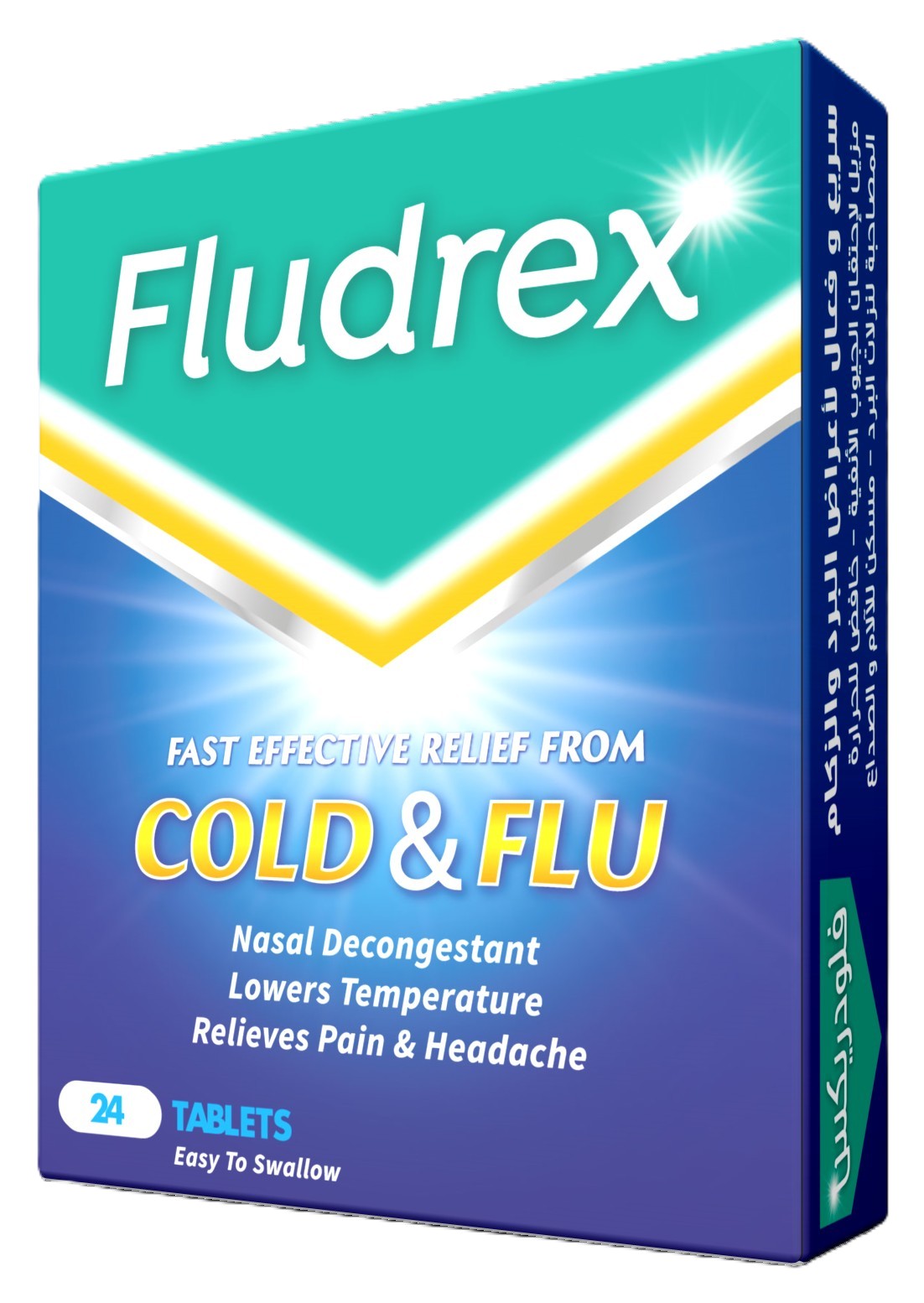FLUDREX Tablets 24 pcs
Fludrex tablets
Active ingredients: Each tablet contains:
Paracetamol 400 mg
Pseudoephedrine HCl 30 mg,
Caffeine anhydrous 32 mg
Chlorpheniramine maleate 3 mg.
Mode of Action:
Paracetamol: based on the inhibition of prostaglandin biosynthesis.
Pseudoephedrine: has direct and indirect sympathomimetic activity and is an effective upper respiratory decongestant.
Chlorphenamine maleate: potent antihistamine (H1-antagonist).
Caffeine: Caffeine is a central nervous system stimulant.
Indications:
FLUDREX is particularly effective against the symptoms of cold and flu.
• Relieving nasal congestion and rhinorrhea.
• Lowering temperature due to common cold & flu.
• Relieving pain and headache.
Posology:
Adults and children ≥ 12 years: one tablet 3 times daily (every 8 hours)
Precautions:
• Do not exceed the stated dose. Maximum dose 8 tablets in 24 hours.
• Caution when used in children from 6-12 years, patients with diabetes, hypertension, hyperthyroidism and ischemic heart disease, in case of epilepsy, prostatic hypertrophy, urinary retention, glaucoma and hepatic diseases, and in patients with a history of peptic ulcer.
Contraindications:
• Hypersensitivity to any component of Fludrex preparations.
• Children <6 years.
• Pregnancy (unless prescribed) and breastfeeding.
• In combination with Monoamine Oxidase Inhibitors (MAOIs).
Undesirable effects:
The following side effects may occur during the treatment: somnolence, insomnia, dizziness, allergic skin rashes, palpitations and gastrointestinal disturbances.
Pharmacokinetic properties:
• ABSORPTION: Paracetamol: is rapidly and almost completely absorbed from the gastrointestinal tract. Pseudoephedrine: the C max of pseudoephedrine was approximately 180 ng/ml with t-max occurring at approximately 1.5 hours for the tablets after drug administration. Chlorphenamine maleate is well absorbed from the gastro-intestinal tract, following oral administration. The effects develop within 30 minutes, are maximal within 1 to 2 hours and last 4 to 6 hours. The plasma half-life has been estimated to be 12 to 15 hours. Caffeine is absorbed readily after oral administration, but absorption from the gastrointestinal tract may be erratic. There is little evidence of accumulation in any tissue. Caffeine passes readily into the central nervous system and into saliva. Concentrations have also been detected in breast milk.
• DISTRIBUTION: The apparent volume of distribution of pseudoephedrine (Vd/F) was approximately 2.8 l/kg.
• METABOLISM AND ELIMINATION: Paracetamol: The concentration in plasma reaches a peak in 30 to 60 minutes and the plasma half-life is 1 - 4 hours after therapeutic doses. Paracetamol is relatively uniformly distributed throughout most body fluids. Plasma Protein Binding of the drug is variable; 20 to 30% may be bound at the concentrations encountered during acute intoxication. Pseudoephedrine: the t½ was approximately 5.5 hours. Pseudoephedrine is partly metabolized in the liver by N-demethylation to nor-pseudoephedrine, an active metabolite. Pseudoephedrine and its metabolite are excreted in the urine; 55% to 90% of a dose is excreted unchanged. Chlorphenamine: is metabolized to monodesmethyl and didesmethyl derivatives. About 22% of an oral dose is excreted unchanged in the urine. Caffeine: It is metabolized almost completely and is excreted in the urine as 1-methyluric acid, 1-methylxanthine and other metabolites, with only about 1% unchanged.
Storage and disposal:
• Keep in a safe place, out of the reach and sight of children.
• Store below 25 ºC, Protect from light.
How to use?
Adults and children ≥ 12 years: one tablet 3 times daily (every 8 hours)
Ingredients
Paracetamol 400 mg
Pseudoephedrine HCl 30 mg,
Caffeine anhydrous 32 mg
Chlorpheniramine maleate 3 mg.
| SKU | 54264 |
|---|

